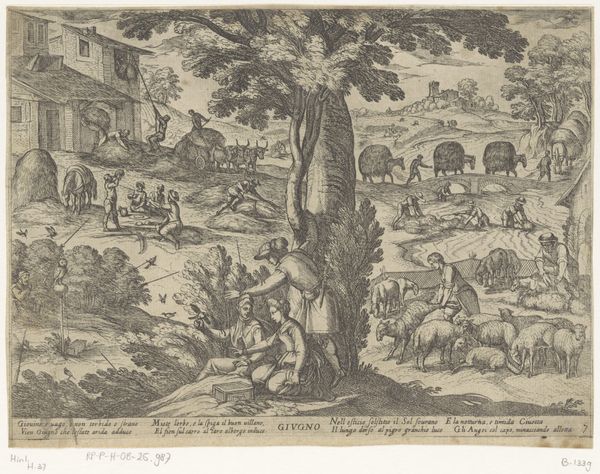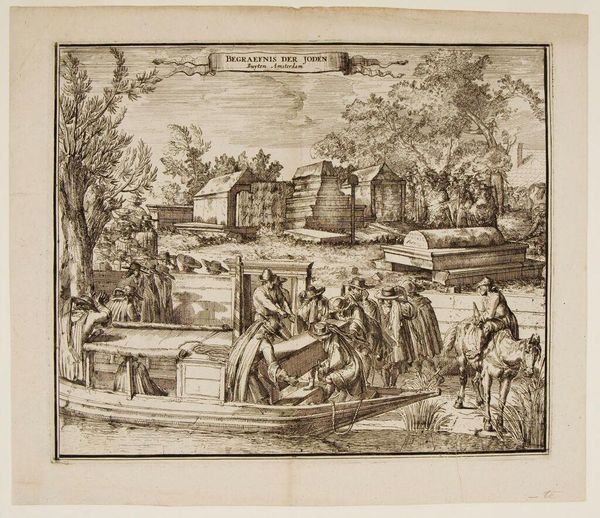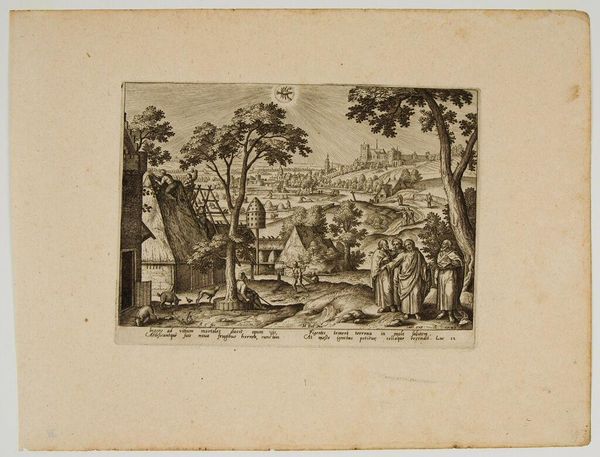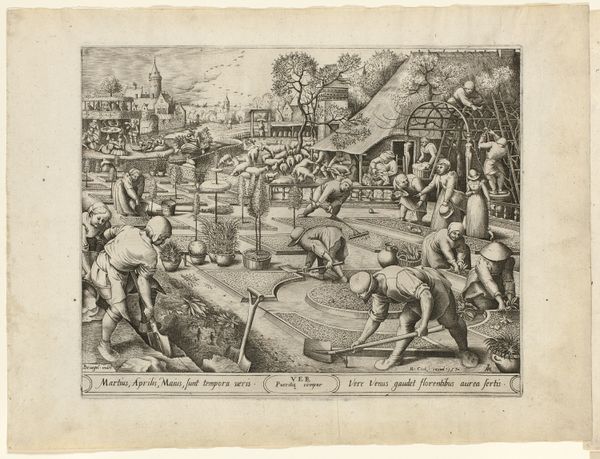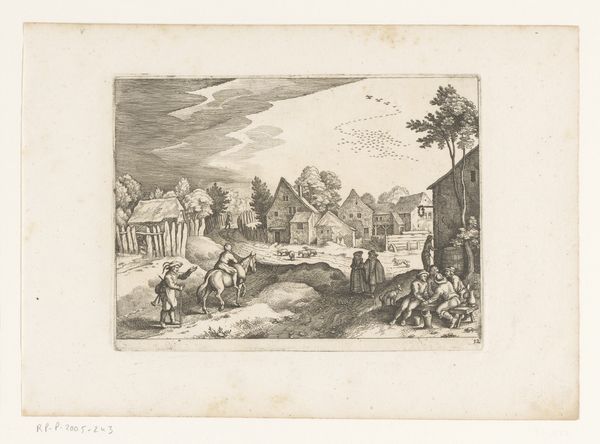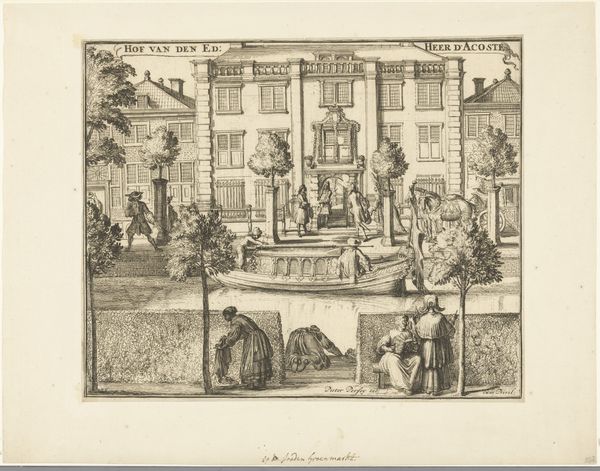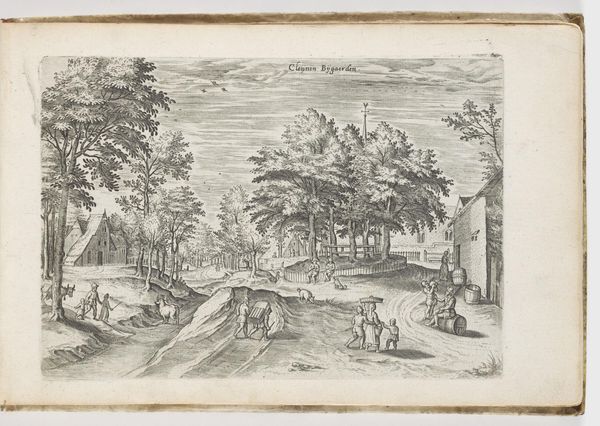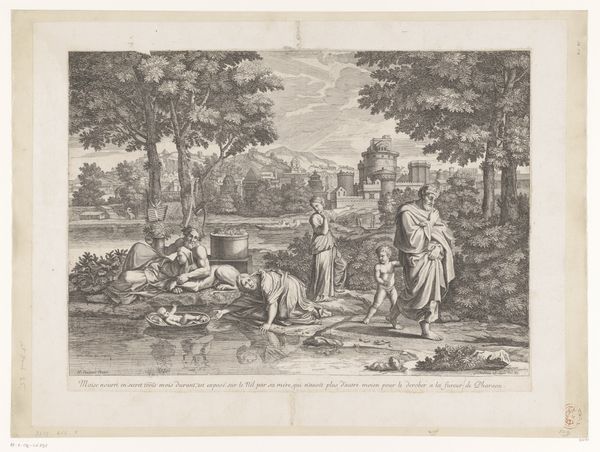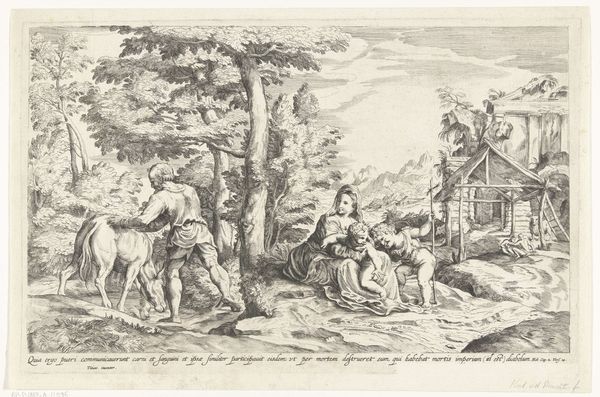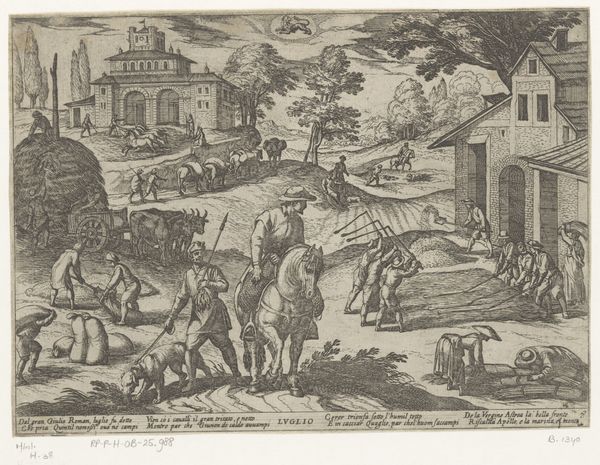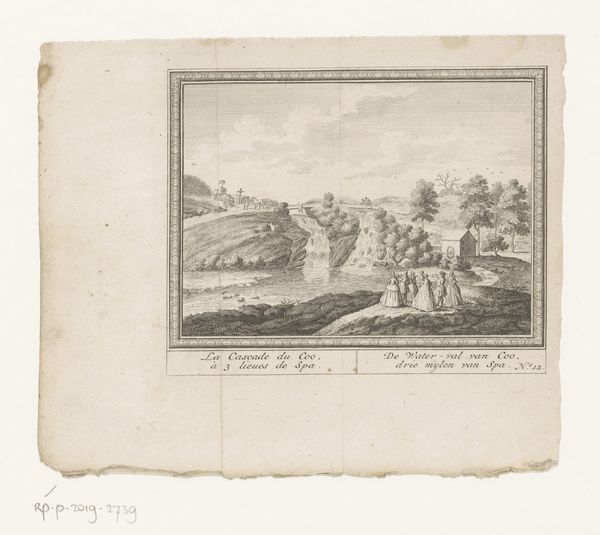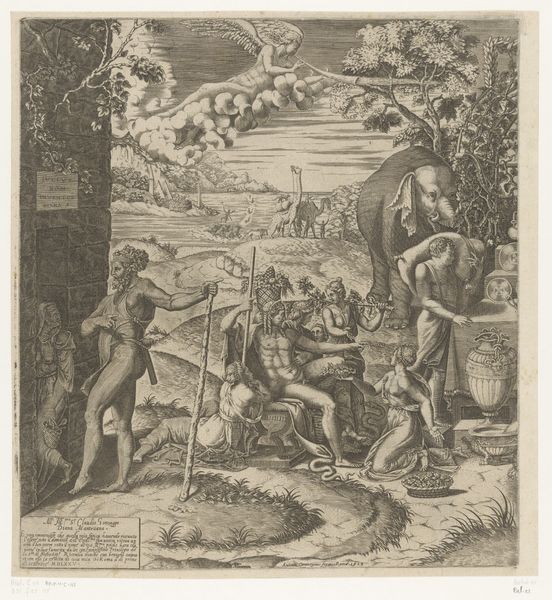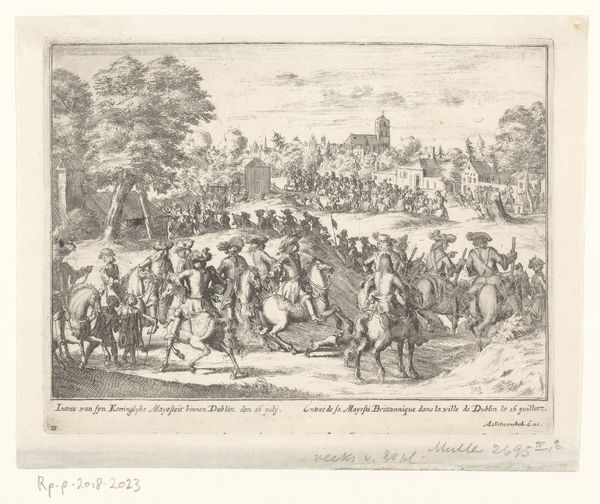
Trekschuit bij Portugees-Joodse begraafplaats Beth Haim te Ouderkerk aan de Amstel c. 1675 - 1695
0:00
0:00
print, engraving
#
baroque
# print
#
landscape
#
history-painting
#
engraving
Dimensions: height 237 mm, width 285 mm
Copyright: Rijks Museum: Open Domain
Curator: Here we have "Trekschuit bij Portugees-Joodse begraafplaats Beth Haim te Ouderkerk aan de Amstel," which translates to "Trek Boat at the Portuguese-Jewish Cemetery Beth Haim in Ouderkerk aan de Amstel". This print, an engraving, dates back to somewhere between 1675 and 1695, and it’s the work of Romeyn de Hooghe. Editor: It's stark, isn't it? Immediately, I get a feeling of solemnity, almost voyeuristic, like we are intruding on a very private moment. The monochromatic quality just intensifies that. Curator: Yes, the limited palette and the precision of the engraving amplify the emotional weight. But it’s more than just a scene; it captures a significant cultural crossroads. The Beth Haim cemetery was, and still is, an incredibly important historical site. The Sephardic Jewish community held it as a place of sacred reflection. Editor: You see, it strikes me that the boat seems so integral to this image. How fascinating to think that the water, often seen as a divider, becomes a connector, bringing the deceased to their final resting place. Did water figure into their rituals in other ways, do you know? Curator: Indeed. Water held significant symbolic value, seen as both purifying and as a conduit. The Jewish tradition emphasizes ritual cleansing, and water represented transformation and rebirth. Think about how this landscape echoes themes in Jewish mysticism, such as life and death as stages of an evolving soul. Editor: The way they're handling the casket is also important, right? Look how reverently they manage the transfer. There's no frenzy, no drama, but something quite poignant about the quiet care in the work of this engraving. Curator: Exactly. It illustrates not only the physical act of burial, but also hints at the profound respect and honour embedded within Jewish funeral practices. Each gesture carries historical weight, marking communal identity and historical memory in ways that texts often cannot capture. Editor: I am left with such a sense of reverence for lives lived and now concluded. The meticulous detail makes this far more powerful, not merely some depiction of mourning. And perhaps this work’s true subject is continuity—a way for those voices of the past to continue speaking in the present. Curator: A thoughtful way to consider the impact of cultural continuity within visible material. Let’s journey now to the next artwork.
Comments
No comments
Be the first to comment and join the conversation on the ultimate creative platform.
